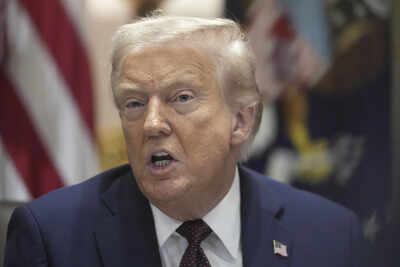ARTICLE AD BOX

On a sweltering June day in 2025, President Donald Trump raised steel and aluminum tariffs to 50% on imports from most countries, heralding the move as a triumph for American industry and a shield for factory jobs.
Headlines celebrated the victory, workers on assembly lines cheered, and politicians framed it as proof of a government that “put American jobs first.” Yet beyond the gleaming factories, a quieter, far-reaching consequence was taking shape.In classrooms, lecture halls, and research labs across the nation, universities, employing more than three million Americans, far outnumbering steel mill workers, were quietly under siege.
Restrictive immigration policies, proposed four-year limits on international students, and constrained funding threatened to erode the economic backbone of higher education. While steel jobs were safeguarded, the institutions that educate, innovate, and employ at a massive scale were left exposed, their contributions to the national workforce overlooked.
A disproportionate focus on steel
While steel mills employ fewer than 85,000 Americans, colleges and universities account for over 3.1 million jobs, nearly 35 times as many, as reported by Forbes. Salaries in higher education, moreover, surpass those in steel, with median annual pay at $65,900 compared to $60,210 in iron and steel production, as suggested by media reports.
Yet the administration’s focus on industrial protectionism overlooked this reality. Economic studies of prior steel and aluminum tariffs show that for every steel or aluminum job gained, 18 jobs were lost elsewhere, resulting in a net loss of nearly half a million positions across the economy.
Immigration policies strike at the heart of academia
While tariffs defend a small, visible segment of the economy, immigration restrictions have quietly undermined the higher education sector.
Proposed rules limiting international students to a four-year stay threaten the very foundation of research and teaching programmes. These policies risk displacing faculty, researchers, and administrative staff, while diminishing the inflow of global talent that sustains American universities’ competitive edge.Economist Irwin Stelzer notes in The Sunday Times that government favoritism disrupts market forces, allowing political priorities to dictate employment outcomes.
Scott Lincicome of the Cato Institute points out that tariffs have inflated US aluminum prices by roughly 50% compared to Europe and Japan, undermining manufacturers while the broader employment effects are ignored.
The real job engine
Higher education is not only an intellectual hub but also a critical employment engine. Policies that disadvantage universities may preserve a few thousand steel jobs, but they threaten hundreds of thousands of positions across classrooms, research labs, and administrative offices.
In this context, the administration’s “job protection” narrative falters, revealing a profound misalignment between political optics and economic reality.
A question of priorities
Every restrictive immigration rule, funding cut, and policy delay compounds the strain on universities. The choice is clear: defend politically symbolic industries or recognize the broader economic and societal value of institutions that employ millions, educate global talent, and drive innovation. The Trump administration’s legacy in this domain may well be judged not by steel tariffs, but by the universities weakened and the jobs lost in America’s intellectual economy.



.png)
.png)
.png)
















 1 week ago
8
1 week ago
8







 English (US) ·
English (US) ·